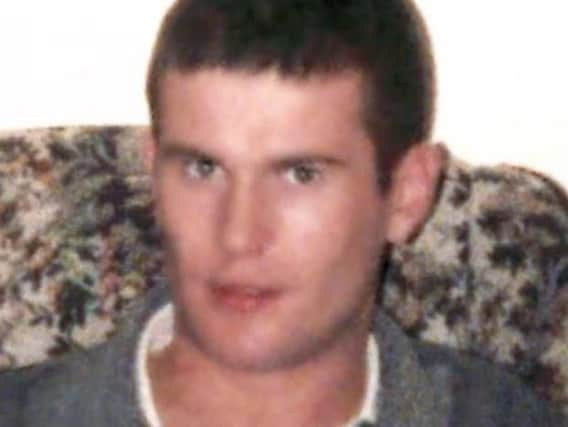Jury now deliberating verdict in David Miller murder case


Mr Miller was killed in his flat sometime between the evening of June 10 and morning of June 11 last year with four people accused of murdering him, and of making crude attempts to dispose of the body in the days leading up to their arrests on June 14.
Ian Cuthbertson, 51, Michael Hallett, 37, Joseph Catlin, 30, Zena Kane, 35, all deny the murder charges.
Advertisement
Hide AdAdvertisement
Hide AdBefore the summaries, Judge Rupert Mayo outlined the legal arguments which the jury must consider, most notably that the defendants can only be guilty of murder for events that took place before Mr Miller’s death, and that the jury cannot convict anyone on the basis of any mutilation or attempts to dispose of the body.
The jury will deliver a judgement on each defendant, either a guilty of murder, a guilty of manslaughter, or a not guilty verdict.
Benjamin Aina, defending for Cuthbertson, told the jury that, based on the evidence heard in court, his client was only at the flat because he wanted a bath and a change of clothes.
He said his client had not participated in the killing, citing the fact he had had body parts thrown at him and was taunted with calls to “grow a pair” as evidence which suggested he had not been involved in the “brutal” killing.
Advertisement
Hide AdAdvertisement
Hide AdMr Aina also addressed witness Jason Smith’s statement in court in which he admitted to dumping clothes he had exchanged with Cuthbertson.
The defence told the court that no witnesses had said Cuthbertson had blood on his clothing, and that it was only until Mr Smith suggested to Cuthbertson on the Sunday that his DNA might implicate him, that he was convinced by to change his clothes.
Earlier the prosecution had suggested in its summing up that Cuthbertson had thrown a punch which initiated the attack.
Mr Aina addressed this saying Cuthbertson had in fact punched Mr Miller to diffuse a situation, it had happened before anything had started and he had done it to stop anything from going off.
Advertisement
Hide AdAdvertisement
Hide AdRudi Forston, defending for Catlin, pointed out that his client had suffered two brain injuries in the past, and was diagnosed with PTSD.
He said his client had been “in the wrong place at the wrong time".
When considering the evidence in the case Mr Forston said it was not possible to know who inflicted the fatal stab wound or who was in the bedroom at the relevant times.
Regarding his client, he said there was no significant blood-related evidence which could lead the jury to be sure of Catlin’s involvement.
Advertisement
Hide AdAdvertisement
Hide AdMr Forston said that engaging in acts after death cannot be murder or manslaughter, and his client was the only defendant who never made any incriminating remarks.
James House, defending for Kane, bemoaned the prosecution’s broad brush approach in their summary, stating that its conclusion of “it does not matter who did what or when, they were in this together” was not entirely fair.
He referred to forensic scientist Judith Cunnison’s evidence in which she said she could not be certain how many attacks took place on Mr Miller before his death, and that it had been a protracted event.
Mr House made the point that Kane was happy to give her details and have her picture taken when pawning a ring which the prosecution allege belonged to Mr Miller’s mother.
Advertisement
Hide AdAdvertisement
Hide AdKane and Catlin were already staying at the flat, and the court heard that Kane was “always drunk". As Kane was always intoxicated, Mr House then asked what had changed on the evening of the murder.
“What was the difference between that night and all the others? Well we know that Ian Cuthbertson and Mick Hallett were there,” said Mr House.
Richard Atkins, defending Hallett, was the last to address the jury. He reminded the members a person is only guilty of murder if the prosecution have made them sure of it.
He said his client had told one of the witnesses that he would take the rap, but that did not make him responsible.
Advertisement
Hide AdAdvertisement
Hide AdHe addressed the evidence put to the court about Hallett making admissions in the days following the murder, and also his abusive and volatile behaviour.
“The fact that he made those comments does not make him a murderer.”